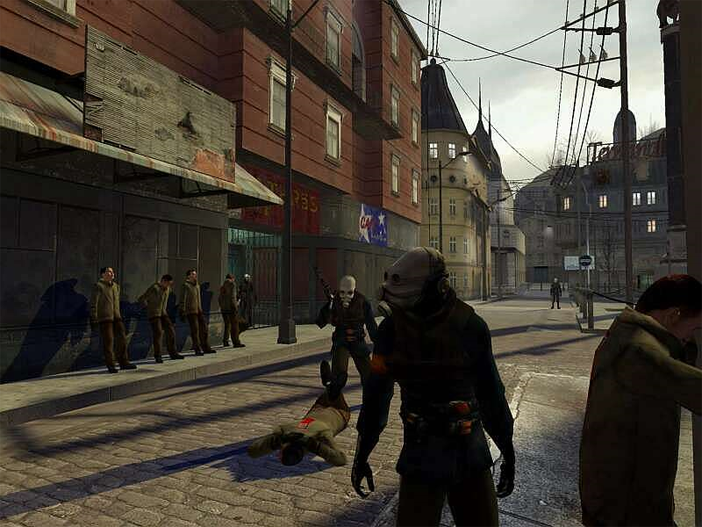Perhaps the least interesting and (currently) most easily dismissed view of art is that assumed by Plato and the ancient Greeks, and held as norm through the Renaissance: the view that art intends to imitate and represent. According to this view, a painting of a chair is good art if it looks like the chair—and is hopefully pleasing to the eye.
With video games the obvious element to analyze at first—partly due to our current pride in photo-real rendering—is graphics. And indeed we score high here. While there is still progress to be made, games like Unreal Tournament 2004 and Half Life 2 are approaching the level of photo-realism we expect to see in movies. Give us another twenty to thirty years, and a tree in one of these games will be indistinguishable from its photographic counterpart. Not only that, but with the advent of molecular computers and technology designed to project images directly onto our ocular lenses, we’ll soon have photorealistic 3D worlds to play in—I’d like to see a Renaissance artist top that for realism.

Of course, besides the visual element, we also have the trickier question of how well a video game imitates the subtleties of the roles that it tries to recreate. Do players of America’s Army come away understanding what it’s really like to engage in modern day infantry combat? Do the Tony Hawk video games depict an accurate vision of skate culture and life? Is the world of Creative Assembly’s Rome: Total War a solid representation of Roman generalship? These questions are harder to answer, and in most cases we’ll probably end up saying “not really,” but the fact of the matter is, the only reason that we’re asking these questions at all is because we have reached such a high level of mimetic production. We are looking to reproduce reality not a slice at a time on a piece of canvas, but in great multi-sensuous chunks. Granted, movies have already moved in this direction with their combination of sound, sight, and temporality, but games are taking things to a whole new level with their interactive component and—in virtual reality experiments—the inclusion of all five senses.
And did I mention that they are doing it beautifully? If art is meant to represent reality as closely as possible while delighting our senses, then video games (loosely defined) are the future of art, period.

